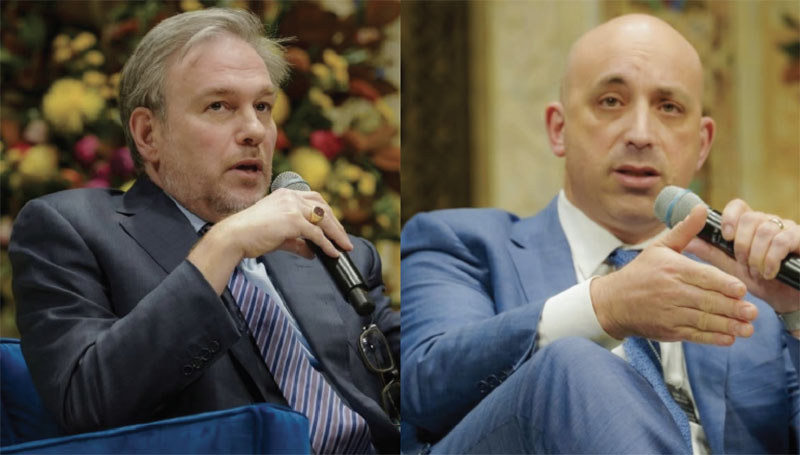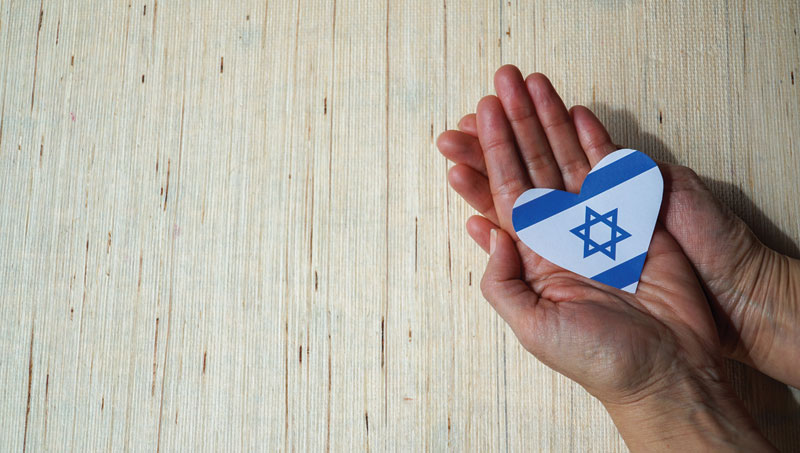The wind blew cold and fierce and the waves crashed onto the beach as the sun set pink behind the craggy Santa Monica Mountains and bonfires battled for their lives in pits carved into the sand.
It’s a scene that might well seem like any weekend at Dockweiler Beach in El Segundo, the only Los Angeles public shorefront where bonfires are legal. But last weekend, there was a different type of crowd, for a special type of celebration: Lag B’Omer.
Never heard of it?
Don’t worry, many Jews haven’t. Lag B’Omer, literally the 33rd day of the counting of the Omer — the period between Passover and Shavuot — is a relatively minor Jewish holiday that in recent years has become more popular among spiritually seeking Jews.
It marks the day that the plague that killed 24,000 of Rabbi Akiva’s students ended; it also marks the anniversary of the death of Rabbi Shimon Bar Yochai, who some think wrote the primary Kabbalistic text, the Zohar.
The holiday has always been observed by the Orthodox, and in Israel, it’s celebrated nationally and is a school holiday, but these days, some non-Orthodox synagogues, Jewish youth and singles groups and others have also taken to the beach to build fires, sing and revel in the fun.
“I’m really into how a lot more Jewish events have spread to non-Orthodox communities, like tashlich,” said Donna Bojarsky, a political consultant. On Tashlich, as part of the Rosh Hashana celebration, people throw bread into a body of water to symbolically wash away sins.
Like Lag B’Omer, the ritual often involves a trip to the beach and has become a festive community event, a way for Jews of all stripes to find new meaning and connections to Judaism outside the typical American “three-day-a-year” traditions.
“I think that’s a cool thing, and I wanted to support it,” said Bojarsky, one of 60 or so people who came to the bonfire of Nashuva, the spiritual community led by Rabbi Naomi Levy. A half-dozen or so bonfires from various Jewish organizations and groups of friends peppered the beach on both Saturday and Sunday nights this year. Many postponed the event from its actual night until Sunday because of the late hour of the Shabbat sunset.
The spirit of the holiday can be as different as the people celebrating it. At the Kabbalah Centre on Robertson Boulevard, Saturday was an all-night learning, singing and dancing affair celebrating Rabbi Shimon Bar Yochai. In Israel, tens of thousands of people visit his grave to say special prayers, and upsherin, the first haircuts for 3-year-old boys, are also done there, and around the world, on this holiday. Picnics, outings, concerts and all types of celebrations mark the day, which breaks up the mourning period of the Omer.
“Legend has it that Shimon Bar Yochai hid in a cave for 12 years,” Rabbi Levy explained to the Nashuva participants. They were sitting bundled up against the wind on beach chairs and blankets, surrounding an array of drums about to be played. Levy told how a freshwater spring and a carob tree appeared near the rabbi’s cave, and he survived on those while he studied inside the cave. When he emerged, he could no longer understand regular life, because he was on such a high plane, and so Lag B’Omer became a celebration of the mystical Torah, the way that Shavuot is a celebration of the physical Torah. “Tonight, in honor of Rabbi Shimon Bar Yochai, we’re asking ourselves to take ourselves into a another world, a mystical world, and enter into a place of joy and insight,” Levy said.
Some groups had bonfires to celebrate Bar Yochai — and their identity.
“He’s Sephardic, a hero to Jews,” said Sandy Benchimol, director of the Sephardic Educational Center, an organization with branches around the United States, Canada and Israel. By the time the sun went down, SEC had the biggest bonfire on the beach and some 60 twenty-somethings.
For others, Lag B’Omer is not about anything religious at all.
“We’re here to pass on the tradition,” said Ayelet Sason, who sat at another bonfire with some 20 other Israelis. Like most of their countrymen, they mark holidays with barbecues and had brought supplies to make hot dogs and hamburgers to accompany the chips and marshmallows that were at every one of the Lag B’Omer tables. They also brought guitars and songbooks to sing traditional Hebrew songs like “Tumbalalaika” and “How Good It Is to Come Home.”
And for those involved in kiruv, or outreach bringing Jews closer to Judaism, Lag B’Omer is a way to bring it all together — identity, community, spirituality, religion and fun.
“They get Jewish identity by getting together for a Jewish festival,” said Rabbi Chaim Brooke, head of CSUN Hillel, at the fire for students from Chabad at Santa Monica College, Pierce and CSUN. “It inspires them to be better Jews and better people.”






















 More news and opinions than at a Shabbat dinner, right in your inbox.
More news and opinions than at a Shabbat dinner, right in your inbox.